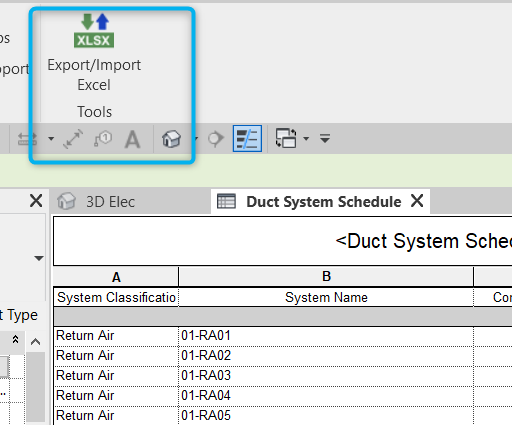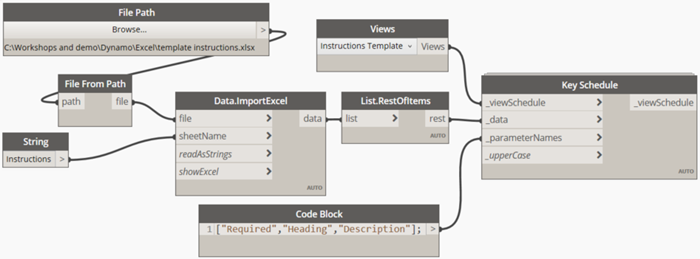Revit Tool to Equip Your Building Info Modeling
Wiki Article
Mastering the Art of Information Assimilation: Exactly How to Seamlessly Import Excel Record Into Revit
In this article, we will certainly assist you with the procedure of mastering the art of data integration. Get all set to prepare your Excel information easily and follow our step-by-step overview to import data right into Revit. With our ideal techniques, you'll achieve data integration success in no time.Understanding the Significance of Data Combination in Revit
Comprehending the value of information combination in Revit is crucial for seamless importing of Excel files. When you integrate data from Excel into Revit, it enables you to efficiently update and manage details throughout the whole task. This combination guarantees that your design and construction process is accurate and current.By integrating information, you can conveniently import and update parameters, schedules, and also geometry in Revit. This gets rid of the demand for hand-operated data entry, conserving you time and minimizing the risk of errors. With Revit's data assimilation abilities, you can maintain consistency and accuracy in your task, while likewise improving cooperation amongst employee.

Discovering the Excel Documents Layout for Revit Assimilation

In order to efficiently incorporate Excel files right into Revit, it is crucial to ensure that the information is formatted properly. This includes effectively labeling rows and columns, as well as structuring the information in a means that is compatible with Revit's data schema. Revit makes use of certain specifications and categories to arrange data, so it is necessary to align the Excel information with these specifications to ensure a smooth combination.
In addition, it is essential to note that Revit just supports particular data types when importing from Excel. These consist of message, numbers, and dates. Any various other data kinds, such as formulas or conditional format, will not be acknowledged by Revit and may trigger concerns throughout the integration process.
Preparing Your Excel Data for Seamless Import Into Revit
To make certain a smooth integration process, you'll need to appropriately layout and tag the columns and rows in your Excel information before importing it into Revit. Since it permits Revit to accurately translate and arrange your data, this step is critical. Beginning by examining your Excel information and recognizing which columns and rows consist of pertinent information for your Revit job. After that, see to it to label each column with a detailed and clear header. This will certainly help you and others easily comprehend the objective of each column and stay clear of confusion during the import process.Following, ensure that the data in each column is correctly formatted. For example, if you have a column for dimensions, ensure that all dimensions are regularly formatted in the exact same systems of measurement. Revit depends on constant formatting to accurately interpret and import information.
In addition, it is very important to examine for any kind of vacant cells or inconsistencies in your data. Revit may not be able to check out or import data from cells that are empty or consist of errors. Therefore, it is recommended to evaluate your Excel data and tidy up any type of disparities before importing it right into Revit.
Step-By-Step Overview to Importing Excel Data Into Revit
Once you have actually correctly formatted and classified your Excel data, you can easily import it right into Revit by following this step-by-step overview. To begin, open Revit and browse to the "Insert" tab. revit plugins.Following, a dialog box will show up, allowing you to tailor the import settings. Right here, you can choose the worksheet you wish to import, define the variety of cells to import, and pick the suitable devices for your data. When you have actually made your choices, click "OK" to proceed.
Revit will now present a preview of your Excel information. Take a minute to assess the sneak peek and make certain that every little thing looks proper. If needed, you can make modifications to the import setups by clicking on the "Settings" switch.
Ideal Practices for Data Combination Success in Revit
Make sure you follow these finest methods to make sure useful site effective combination of information in Revit. It is essential to organize your data in Excel before importing it into Revit. Be mindful of the units and information kinds when mapping the data, as any discrepancies can lead to errors in the integration procedure.One more essential method is to frequently validate and upgrade your data. Additionally, make usage of data validation devices within Revit to identify any kind of errors or incongruities in the incorporated data.
Finally, it is recommended to develop a clear workflow for information integration. This consists of specifying functions and responsibilities, establishing a communication channel in between employee, and establishing a routine tempo for data updates and testimonials. By following these best methods, you can ensure a successful and smooth assimilation of data in Revit, inevitably improving the effectiveness and precision of your project.
Final Thought
In verdict, mastering the art of data integration is critical for seamless import of Excel files into Revit. Comprehending the importance of data integration in Revit is the very first step in the direction of successful integration. Checking click for more info out the Excel documents format for Revit integration assists in recognizing the needs and limitations. Preparing the Excel information effectively and following a like this step-by-step guide is vital for a smooth import procedure. By adhering to ideal practices, you can ensure data combination success in Revit and make the most out of your job.When importing data from Excel right into Revit, it is vital to recognize the documents layout and just how it can impact the combination procedure (revit plugins). Revit uses specific parameters and groups to arrange information, so it is essential to align the Excel data with these criteria to make certain a smooth assimilation
Be conscious of the units and information types when mapping the information, as any kind of inconsistencies can lead to errors in the integration procedure.
Furthermore, make use of information recognition devices within Revit to recognize any type of errors or incongruities in the incorporated data.

Report this wiki page